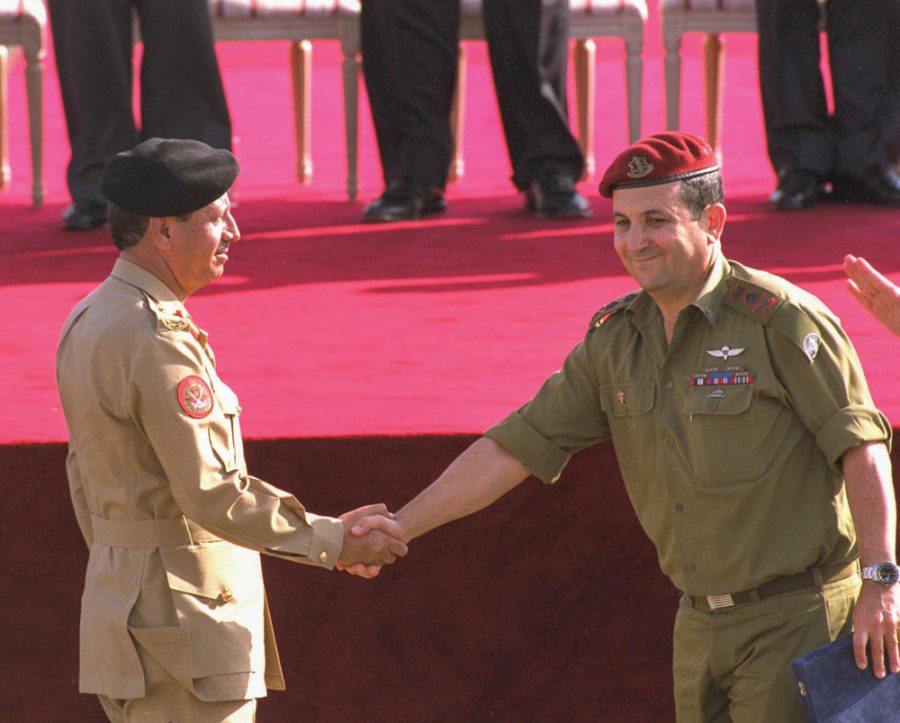Autobiography details Ehud Barak’s fascinating military, political career
Published June 7, 2018
As many readers may know, Ehud Barak is Israel’s most decorated military man. He grew up on a kibbutz in what became northern Israel after independence in 1948 and rose to chief of staff before leaving the military and going into politics on the Labor side.
He earned a bachelor’s degree in physics and mathematics from Hebrew University and a master’s in engineering-economic systems from Stanford. He loves to play European classical music on the piano. He even dressed in disguise as a woman during a raid in Beirut.
One could say without exaggeration that Barak epitomizes the ideal of the scholar-soldier. The arc of his life — he was born in 1941 — follows the history of the Jewish State up to the present.
ADVERTISEMENT
Barak was prime minister from 1999 to 2001 and led the ultimately unsuccessful negotiations at Camp David II with Yasser Arafat and the Palestine Liberation Organization under the involved supervision of President Bill Clinton.
He was head of Labor from 2007 until January 2011 and has served as Minister of Defense in two Likud-led governments, from 2007 to 2013.
Those dates and details are worth knowing because, in his understated style, writing in English, Barak recounts the wars and conflicts he experienced and that have shaped Israel today.
ADVERTISEMENT
In other words, the author brings to readers a wealth of experience and observations about the State of Israel, past, present and future. Yet he is, he writes, an optimist, which the tone of this long account bears out.
As one who has taught undergraduates and graduate students the history of the Arab-Israeli conflict for years, I found Barak’s detailed accounts of military operations and battles most informative. If he wasn’t there – the raid in July 1976 to rescue hostages at the airport at Entebbe, Uganda, for instance — he doesn’t embellish the story.
He never seems to pull the spotlight to himself. Therefore, his accounts of quite detailed negotiations are most helpful to one who wants to understand the history without much spin, which seems to be rare these days.
This book is filled with the names of officers of the Israel Defense Forces (IDF), so the reader gets the correct impression that these officers all know each other and have taken their measure. With few exceptions, Barak is complimentary of his fellow officers. Only a handful does he describe as his rivals or those whose decisions in conflicts have caused major problems.
When it comes to politics, as opposed to his military life, Barak finds there is little honor among equals and sometimes no party discipline or loyalty as members of various coalitions that make up a government may, on a moment’s notice, decide to pull out and go their own way to please their constituents or protect their political fortunes.
The climax of this man’s political career, if there is one, was Barak’s effort in 2000 to forge a solid peace with Arafat and the PLO. His account is almost painfully detailed about negotiations with his team of advisers, Clinton and the Palestinians during what would be the closest they have come to creating a state of their own.
This raises a point that makes this book work so well: Barak kept intricate notes of just about everything that happened to and around him, be that a battle in the Sinai during the Yom Kippur War in 1973 or negotiations with his advisers. This habit becomes quite useful when he describes the days of talks with Arafat and the Palestinians.
The proposal Barak offered Arafat is as follows:
“I was ready to consider Palestinian rule over 91 percent of the West Bank. Our security zone in the Jordan Valley would remain in place ‘less than 12 years.’ And if all went well there, I was prepared for a Palestinian state to have sovereignty over 85 percent of the border area.
“Seven out of the nine outer Arab neighborhoods of Jerusalem would come under Palestinian sovereignty. The inner neighborhoods would be under Palestinian civil authority, including planning and zoning, and law enforcement.”
In other words, Barak offered the Palestinians a tangible stake in Jerusalem, which then and now most Israelis consider politically indivisible. That left the two mosques on Haram al-Sharif, the Temple Mount.
“For the mosques on the Temple Mount,” Barak writes, “I proposed a shared custodianship to include the new state of Palestine, Morocco, and the chair of the Higher Islamic Commission on Jerusalem. I also agreed to consider Palestinian sovereignty over both the Muslim and Christian quarters of the Old City.”
Barak stipulated that any agreement with the Palestinians would be put to a referendum in Israel. Secretary of State Madeleine Albrecht was stunned by Barak’s proposal.
And “Clinton, arching his eyebrows and smiling, said what I’d offered was a package of genuine concessions,” Barak writes.
However, Arafat rejected the offer. Clinton couldn’t believe this. As it turned out, Arafat had said there never was a Jewish temple on the contested Temple Mount or Haram al-Sharif.
“[Clinton] went back to see Arafat, telling him he was a making an error on the scale of 1948, when the Palestinians had rejected the partition of Palestine and the creation of an Arab state; or in 1978, when by negotiating on the basis of [Egyptian President Anwar] Sadat’s Palestinian-rights framework, they would have ended up with a mere 5,000 Israeli settlers on the West Bank instead of nearly 200,000. What most astonished Clinton was that Arafat was saying no even to using the package as a basis for negotiations. Arafat would not budge.”
The very bloody second intifada followed soon thereafter.
That was the closest to gaining a Palestinian state that Arafat and his successors would achieve, a point worth remembering today.
Repps Hudson is an adjunct professor of international affairs and journalism and a freelance writer who lives in University City.
















